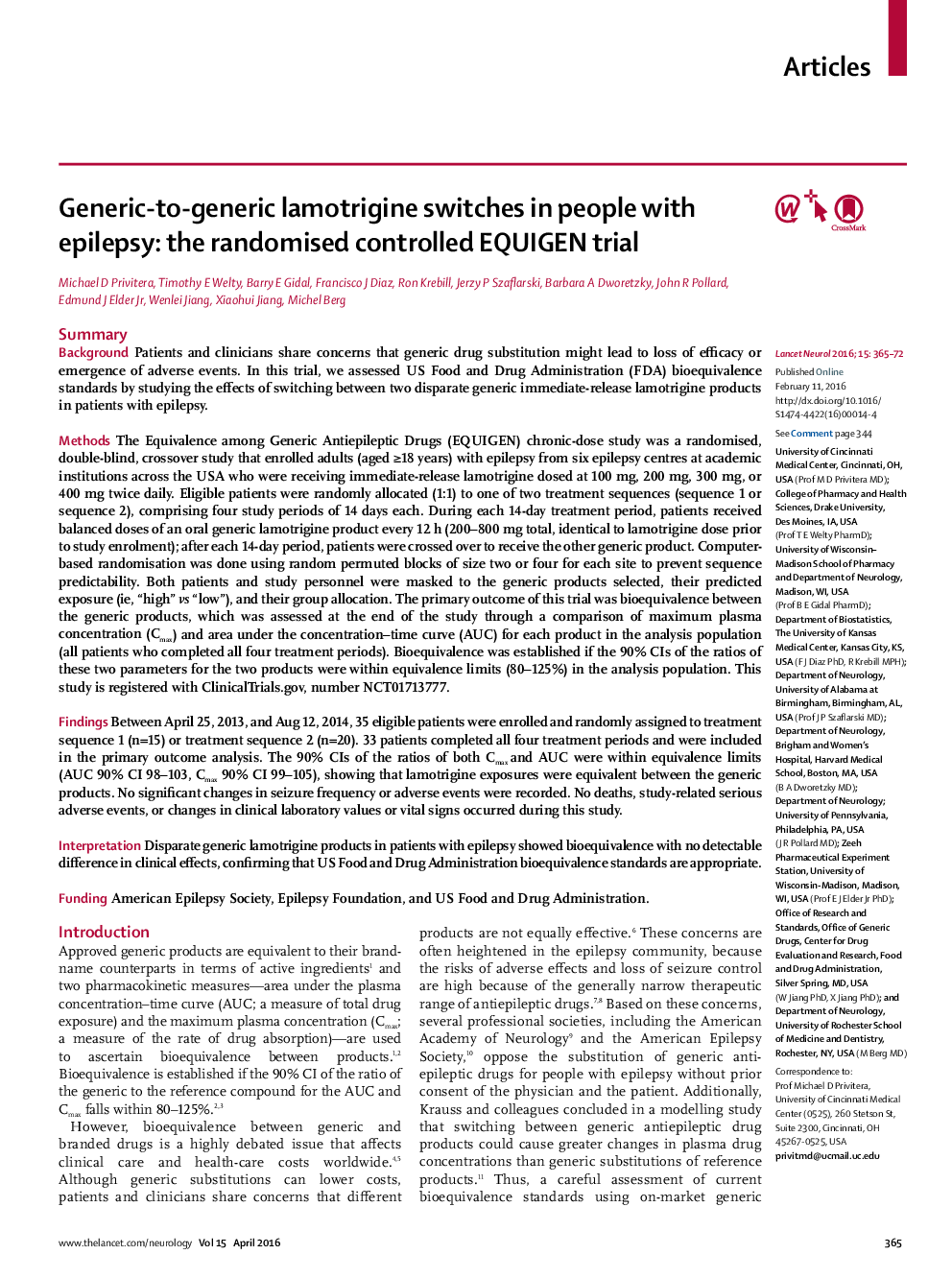| Article ID | Journal | Published Year | Pages | File Type |
|---|---|---|---|---|
| 3066281 | The Lancet Neurology | 2016 | 8 Pages |
SummaryBackgroundPatients and clinicians share concerns that generic drug substitution might lead to loss of efficacy or emergence of adverse events. In this trial, we assessed US Food and Drug Administration (FDA) bioequivalence standards by studying the effects of switching between two disparate generic immediate-release lamotrigine products in patients with epilepsy.MethodsThe Equivalence among Generic Antiepileptic Drugs (EQUIGEN) chronic-dose study was a randomised, double-blind, crossover study that enrolled adults (aged ≥18 years) with epilepsy from six epilepsy centres at academic institutions across the USA who were receiving immediate-release lamotrigine dosed at 100 mg, 200 mg, 300 mg, or 400 mg twice daily. Eligible patients were randomly allocated (1:1) to one of two treatment sequences (sequence 1 or sequence 2), comprising four study periods of 14 days each. During each 14-day treatment period, patients received balanced doses of an oral generic lamotrigine product every 12 h (200–800 mg total, identical to lamotrigine dose prior to study enrolment); after each 14-day period, patients were crossed over to receive the other generic product. Computer-based randomisation was done using random permuted blocks of size two or four for each site to prevent sequence predictability. Both patients and study personnel were masked to the generic products selected, their predicted exposure (ie, “high” vs “low”), and their group allocation. The primary outcome of this trial was bioequivalence between the generic products, which was assessed at the end of the study through a comparison of maximum plasma concentration (Cmax) and area under the concentration–time curve (AUC) for each product in the analysis population (all patients who completed all four treatment periods). Bioequivalence was established if the 90% CIs of the ratios of these two parameters for the two products were within equivalence limits (80–125%) in the analysis population. This study is registered with ClinicalTrials.gov\, number NCT01713777.FindingsBetween April 25, 2013, and Aug 12, 2014, 35 eligible patients were enrolled and randomly assigned to treatment sequence 1 (n=15) or treatment sequence 2 (n=20). 33 patients completed all four treatment periods and were included in the primary outcome analysis. The 90% CIs of the ratios of both Cmax and AUC were within equivalence limits (AUC 90% CI 98–103, Cmax 90% CI 99–105), showing that lamotrigine exposures were equivalent between the generic products. No significant changes in seizure frequency or adverse events were recorded. No deaths, study-related serious adverse events, or changes in clinical laboratory values or vital signs occurred during this study.InterpretationDisparate generic lamotrigine products in patients with epilepsy showed bioequivalence with no detectable difference in clinical effects, confirming that US Food and Drug Administration bioequivalence standards are appropriate.FundingAmerican Epilepsy Society, Epilepsy Foundation, and US Food and Drug Administration.
